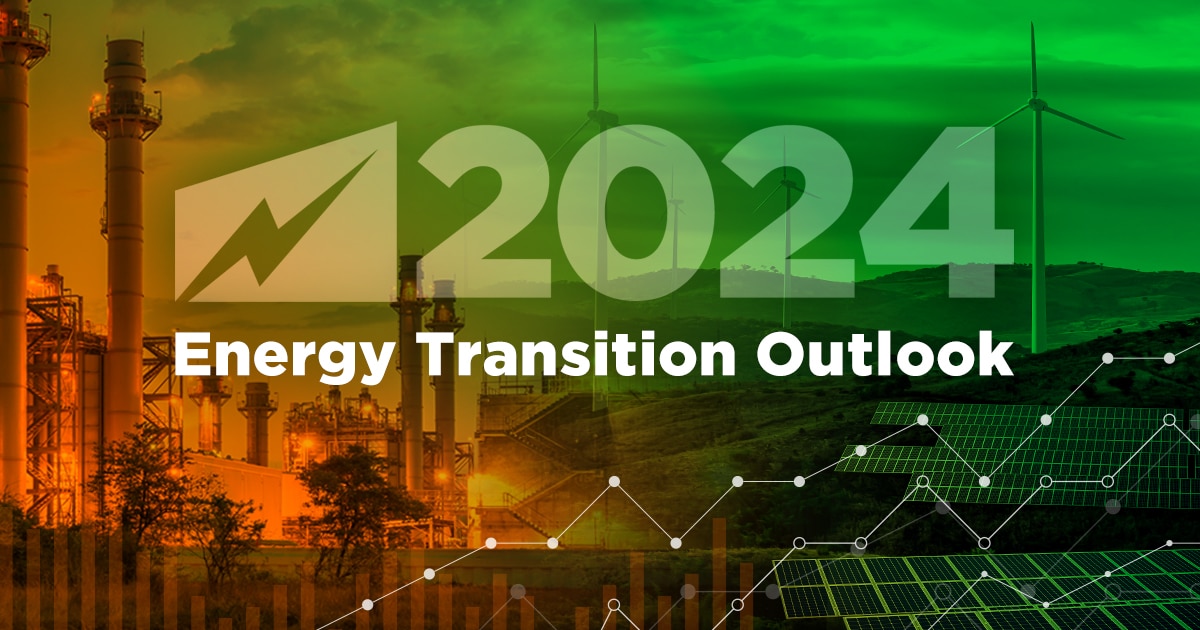In 2023, I got the chance to speak with hundreds of thermal energy plant owners and operators all over the world, both at conferences and on-site at their facilities. In our discussions, the same questions about the future of the industry kept coming up:
- Will demand for thermal power generation grow or shrink?
- How can plant operators increase asset efficiency and profits in the face of parts and labor shortages?
- What role do gas-fired power plants play in the transition to a clean energy future?
Here are my observations on the major trends and factors shaping the energy industry in 2024 and beyond.
The COP28 agreement has outlined a flexible path to the renewable energy transition.
In December 2023, nearly 200 nations signed onto a new global agreement aimed at reducing carbon pollution and climate change, with a goal of net zero by 2050. The agreement calls for tripling renewable energy capacity and doubling energy efficiency by 2030 — but notably, does not mandate that fossil fuels be phased out.
“As a result, countries can choose their own pathways to reduce the greenhouse gas emissions that cause climate change. The sweeping agreement, approved by diplomats from nearly 200 countries, even seems to suggest a role for natural gas, a fossil fuel that has attracted heavy investment in recent years from large oil companies, in ‘facilitating the energy transition,’” The New York Times reports.
In the meantime, demand for natural gas power generation continues to grow.
The International Energy Agency forecasts an average annual growth rate of around 1% for natural gas-fired power generation worldwide. While output in Europe declines, demand and generation are expected to increase in Asia, the Middle East, Africa, and the United States.
“The global gas market is entering a new period as the world gradually emerges from an energy crisis that had profound impacts on both the supply and demand sides,” said Keisuke Sadamori, IEA Director of Energy Markets and Security. “We expect to see solid growth in global gas demand this year as prices have come down to relatively manageable levels. But the speed at which this new demand can be met will be critical, particularly as supplies are tight and substantial new LNG capacity will only come online after 2024.”
Will natural gas become more expensive in 2024? It’s hard to predict. Russia’s ongoing invasion of Ukraine, conflict in the Middle East, and other global tensions may cause market volatility, the IEA says.
Maintaining dispatchable energy generation will be crucial for the energy transition.
The renewable share of the energy-generation pie keeps getting bigger. “Renewables are set to provide more than one-third of total electricity generation globally by early 2025, overtaking coal,” according to the IEA’s Electricity 2024 report. “The share of renewables in electricity generation is forecast to rise from 30% in 2023 to 37% in 2026, with the growth largely supported by the expansion of ever cheaper solar PV.”
This is good news for the climate — yet, as we know all too well in the power-generation industry, solar and wind power is not consistently reliable and available. The same goes for hydro power, which saw some large-scale disruptions in 2023 because of drought. Dispatchable energy generation, which can be adjusted and supplied to the electrical grid on demand, is key. When a hard freeze or a major storm shuts down wind or solar production and consumers are demanding reliable energy, who do they call? The local gas plant.
Remember, too, that day-to-day demand for electrical power is increasing. Electric vehicles are one reason; another is the growth in data centers, which could consume 1,000 TWh annually by 2026 — roughly equivalent to the total electricity consumption of Japan.
Natural gas-fired power plants must build resilience.
The world is counting on gas-fired plants to provide reliable, dispatchable energy… but how reliable are your operations? All too often, power plant operators take a wait-and-see approach to risk mitigation. A catastrophic failure or other crisis hasn’t happened yet, they think, “so I won’t worry about it today.”
I understand this instinct. Operators of gas-fired plants face several obstacles to building resilience, including:
- Aging technology and workforce
- Limited options for parts and service
- Rising O&M costs
- Expensive long-term service agreements
Don’t let these obstacles discourage you! For 7 years, ST Power Services has helped thermal generation power plants stay viable in a rapidly changing energy landscape by devising solutions that are innovative, collaborative, and pragmatic. We can help you create practical strategies for improving efficiency, optimizing asset performance, extending assets’ life cycle, and more.
Then connect with us to start the conversation.


